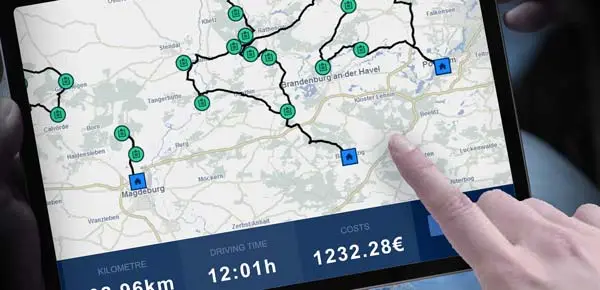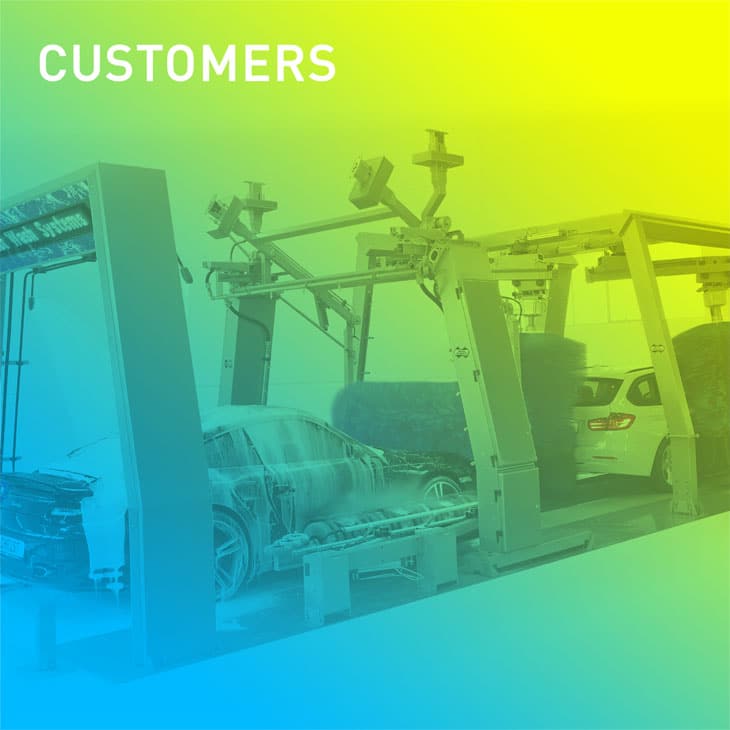
BLOG / SOLUTIONS · ROUTE PLANNING ALGORITHM
SCHEDULE SUCCESS WITH A ROUTE PLANNING ALGORITHM
10 March 2022 · Jeremy Squire
Algorithms accompany us through our everyday lives. Google's algorithm decides which search results are displayed to us. Amazon's algorithms know which purchase recommendations to make to us. Our navigation devices, fitness wristbands, cars and household appliances are also controlled algorithmically in many hidden parts. In all of these cases, the majority of steps run in the background with minimal human intervention.
WHAT IS AN ALGORITHM? SIMPLY EXPLAINED
An algorithm is, simply put, a step-by-step instruction to solve a specific problem. Algorithms have their origin in mathematics and are used today primarily in computer science. An algorithm calculates the desired solution from the user's input. You can imagine an algorithm in its most basic form like a cake recipe (by following this 'instruction manual' step by step, you solve the problem).In principle, software algorithms work in the same way. You require a cake, however each time you run the calculation the 'ingredients' are different. This is the input data. The algorithm processes them step by step into output data or uses them to determine the solution to the problem.
WHAT IS THE PURPOSE OF A FIELD ROUTE PLANNING ALGORITHM?
In route planning, two typical optimisation questions arise:The Salesman Problem: (also known as the Traveling Salesman Problem or Traveling Salesperson Problem) - a travelling salesman wants to plan their tour as efficiently as possible, i.e. to visit as many important customers as possible without driving unnecessary distances and wasting time and fuel. This can be applied to salespeople and suppliers as well. So how do you determine an optimised route and tour?
The Backpack Problem: If you pack a backpack, you have to manage the space and think carefully about what you put in it. The same applies, for example, to the loading space of vehicles. But also for the planning of orders that are to be 'packed' into one day. Which field appointments should your service do today and which no longer fit into the working day?
If you only have to schedule a handful of field service resources, then you might manage fairly well manually. However, the more resources and restrictions (e.g. scheduling constraints or vehicle types) you must take into account, the more difficult it becomes to determine the best route and tour planning. This is where algorithms are critical.
ALGORITHMS ACCELERATE AND OPTIMISE FIELD PLANNING
An algorithm for route and tour planning is clearly superior to manual scheduling above a certain complexity. On its basis and with the corresponding computing power, specialist software programmes find the optimal solution not only for the problem of the travelling salesman and for the backpack problem, but also for all other complexities in route and tour planning. And this is infinitely faster than manual planning or scheduling with Excel or Outlook, Google Maps and Waze.Read more: Stop planning Field Service Appointments with Outlook
With a specialist route planning algorithm, you achieve better and more efficient results. Software like FLS VISITOUR makes a large number of complex calculations in a very short time in order to pack your 'backpack' with orders in the best possible way and to determine the most efficient route for your 'travelling salesmen'.
On the one hand, the tour planning software accelerates the processes in scheduling and field service control. On the other hand, the algorithm ensures that the optimal deployment and tour planning is found according to your needs and preset parameters.
THE FLS POWEROPT ALGORITHM
The heart of our dynamic scheduling solution is the PowerOpt Algorithm. PowerOpt enables individual and efficient planning results in real time. This means that our route planning algorithm translates the complex requirements of a field service or distribution company into optimal scheduling and route planning in seconds. The planning algorithm is not only critical for calculating the ideal routes and job assignments in advance, because even if something changes during the course of the day (appointment cancellations, staff absences, etc.), the system is flexible and continuously optimises routes. This makes PowerOpt your daily companion and advisor, one that learns the nuances of your operations and ensures that your technicians, sales staff, or surveyors and inspection experts can work as effectively as possible at all times and complete more jobs without working overtime.SCHEDULING SOFTWARE MUST MEET YOUR UNIQUE REQUIREMENTS
If you need a powerful algorithm for route and tour planning this leads to cost savings, fewer kilometres driven and less time spent in dispatching and field service. Customer and employee satisfaction also increases, as you can process your orders better thanks to precise and efficient planning. The algorithm is the basis for route optimisation. However, there is more to a suitable software solution. The programme must fit your industry and your company-specific requirements (and be user-friendly). If you are looking for a modern route and tour planning solution, pay attention to the technology behind it as well as the features of the solution and the experience of the software provider in implementing it. Then you will enjoy the scheduling process, with a planning algorithm that will make your daily work easier and increase the productivity of your company.MEET FAST LEAN SMART ROUTE PLANNING SOLUTIONS
To discuss the features of the PowerOpt algorithm to assist field workforce operations and first-time-fix, book a short demo or contact us at info@fastleansmart.com.Read more:
11 Reasons to rofessionalise your Route Planning
Reduce service complexity with innovative FSM software
Cut these 3 costs with Engineer Diary Management software
FLS: The ClickSoftware alternative for Field Service Management

JEREMY SQUIRE
UK Managing Director
Call +44 1183 800189
Send email ›
Jeremy Squire is a business leader and solutions consultant with over 20 years experience in field service scheduling and route optimisation software solutions. He is one of Europe's most recognised and regarded voices in field service technology.




